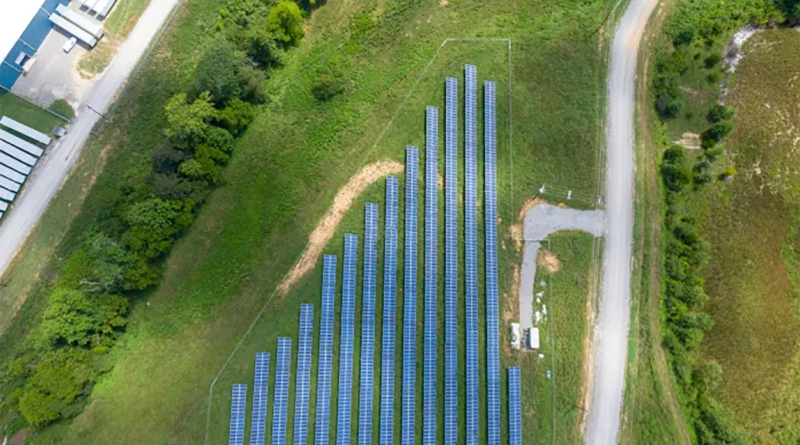California Unveils the Largest Community Solar Project to Date
In a monumental stride for renewable energy, Dimension Energy has completed the largest third-party-owned community solar project in the United States. Located in Inyokern, California, this 44 MW installation marks a significant breakthrough in expanding access to solar energy for both residential and commercial consumers. The initiative underscores the potential of community solar to democratize renewable energy, offering cost-effective and sustainable solutions to households and businesses alike.
Project Features and technology
The Inyokern solar project integrates cutting-edge technology to maximize efficiency and sustainability. Equipped with JA Solar modules known for their high conversion efficiency, TMEIC inverters for optimized energy conversion, and advanced Nextracker trackers for improved sunlight capture, the facility embodies innovation at scale.
Spanning acres of previously underutilized land, the site was transformed into a hub of renewable energy generation. Its third-party ownership model, a relatively novel approach in the solar industry, enables greater flexibility in financing and operations, making it accessible to a diverse subscriber base.
The project’s scale is a testament to the feasibility of large-scale community solar initiatives. With a generation capacity of 44 MW, the installation is poised to deliver reliable, clean energy to over 2,000 households and several prominent commercial entities, including AT&T and Crown Castle.
Impact on Households and Businesses
The Inyokern solar project is poised to transform energy access for a wide spectrum of consumers. By delivering clean, reliable power to over 2,000 households, it addresses a critical gap for residents who may have previously been excluded from renewable energy options due to financial or logistical barriers. This includes renters and individuals without the financial means to install private solar systems, highlighting the inclusive potential of community solar models.
Beyond residential benefits, the project extends its impact to municipal facilities in Long Beach and Corona, ensuring that public services operate on sustainable energy. Major corporate clients like AT&T and Crown Castle are also set to receive power from the installation, aligning with their own sustainability commitments.
For subscribers, the project promises substantial financial savings. Reports estimate approximately $18 million in energy cost reductions over its operational lifespan, offering a clear incentive for adoption.
Environmental and economic benefits
The environmental implications of the Inyokern solar farm are profound. By generating clean energy, the facility is expected to eliminate approximately 21,667 metric tons of greenhouse gas emissions annually. This figure is equivalent to removing over 4,700 cars from the road each year, underscoring the project’s role in combating climate change.
Moreover, the use of renewable energy significantly reduces dependence on fossil fuels, contributing to California’s ambitious climate goals. These reductions in carbon emissions align with the state’s broader agenda to transition to 100% renewable energy by 2045.
Economic benefits complement these environmental gains. For local communities, the project generates job opportunities and promotes economic activity through its construction and maintenance phases. By fostering local investment and reducing utility bills, the initiative reinforces the economic viability of renewable energy solutions.
Broader implications for renewable energy
The successful completion of the Inyokern solar project holds significant implications for the future of renewable energy, both in California and nationwide. Dimension Energy has set a precedent for the scalability and adaptability of community solar models.
California’s stringent energy policies have historically posed hurdles for large-scale solar projects, particularly those involving third-party ownership. However, the Inyokern initiative demonstrates how innovative financing, advanced technology, and collaboration with local governments can surmount these barriers. This project’s success serves as a blueprint for other states seeking to expand access to renewable energy while maintaining economic and environmental sustainability.
Community solar, as a concept, is gaining traction across the United States. The Inyokern installation highlights its potential to transform the energy landscape by making solar power accessible to underserved populations. For renters, small businesses, and lower-income households, the ability to subscribe to shared solar projects democratizes renewable energy in ways that traditional models cannot.
Looking ahead, the Inyokern solar farm underscores the importance of public and private sector collaboration in achieving ambitious climate goals. As community solar continues to grow, it offers a tangible pathway for reducing emissions, lowering energy costs, and increasing energy equity. The lessons learned from this project will likely inform future initiatives, paving the way for a more sustainable and inclusive energy future.
Sources:
To keep up-to-date with our latest energy, oil and gas news, subscribe to our newsletter today.
